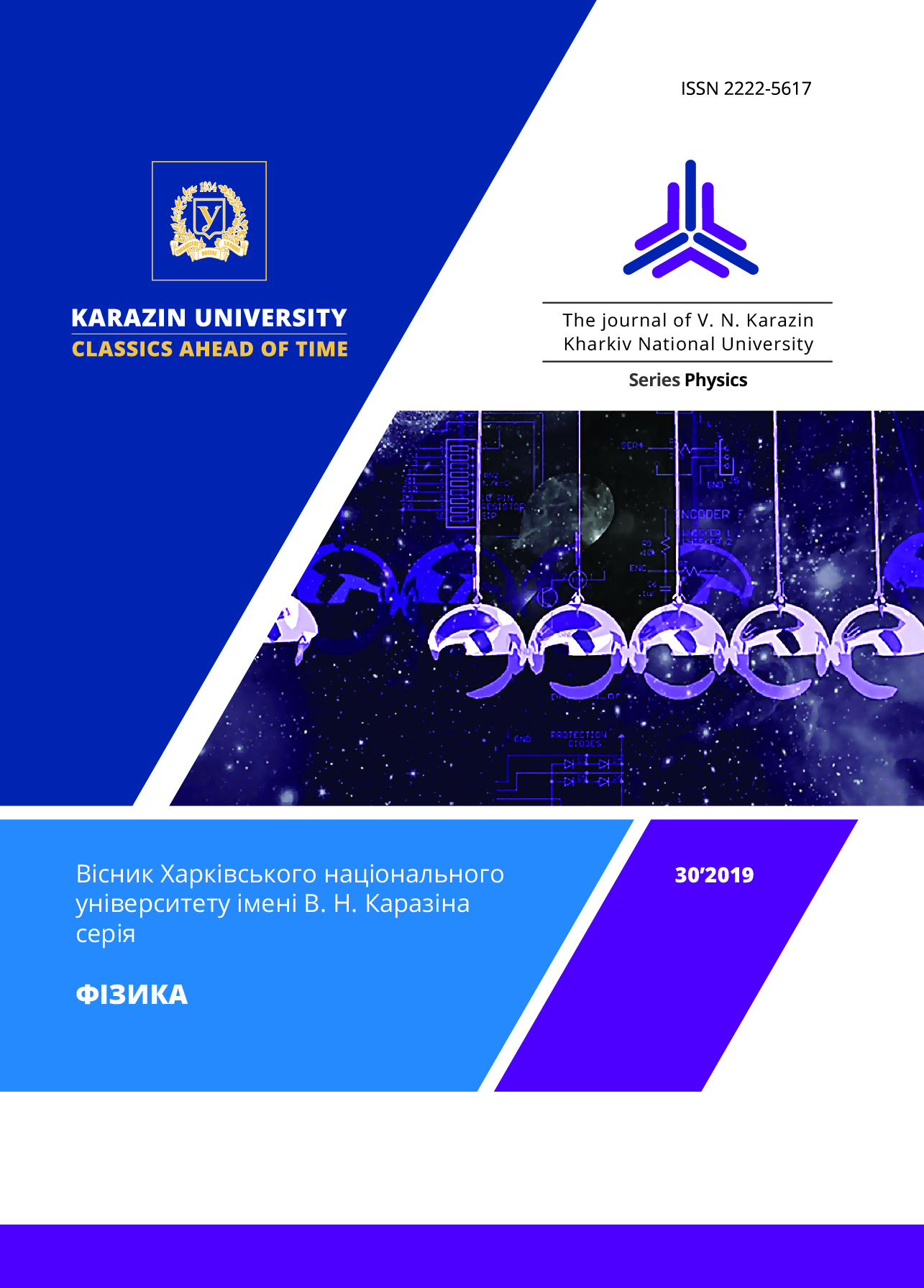Elastic properties of ceramics based on Ti3AlC2 MAX phase
Abstract
The unique mechanical properties of ceramics based on MAX phases (high hardness, thermal and crack resistance combined with the possibility of plastic deformation) make it a widely used multifunctional material. Therefore, the study of its elastic properties, i.e., obtaining information about the value of elastic constants: Young's modulus and Poisson's ratio, is very actual. The values of these constants in a ceramic material substantially depend on the stoichiometry and chemical composition of its phases, as well as on the structure of the material. In particular, in the process of its synthesis by isostatic pressing, crystalline grains of the main phase are formed, inclusions of the initial or secondary phases appear, and a certain number of different voids are formed: isolated pores, their clusters (capillaries), microcracks, etc. These structural elements cause a significant heterogeneity of ceramics, which leads to a change in many physical properties of this material, including elasticity. As a result, the numerical values of the elastic constants of the ceramic material differ distinctly from the values of similar constants characterizing the initial components from which the MAX phase is formed.
The paper presents the results of the effective elastic constants characterizing ceramics based on the Ti3AlC2 MAX phase study. It is shown that the elastic modulus of the ceramic material is characterized by the value exceeding ≈2,5 times the elastic modulus value of the studied phase material itself and reaches the value of ≈ 320 GPa. The observed change in the elastic modulus is due to the heterogeneity of the ceramic material structure and is caused by the presence of hard TiC phase inclusions in it. This conclusion is confirmed by varying the content of TiC phase inclusions in the composition of the MAX phase Ti3AlC2
Downloads
References
M. A. Hadi, R.V. Vovk and Chroneos, J. Mater. Electron, 27, 11925, (2016).
E. N. Sgourou, Y. Panayiotatos, R. V. Vovk, A. Chroneos, Appl. Sci.,7, 674, (2017).
M. A. Hadi, M. Roknuzzaman, A. Chroneos, S. H. Naqib, A.K. Islam, R. V. Vovk, K. Ostrikov, Computational Materials Science, 137, 318,(2017).
T. A. Prikhna, A.V. Starostina, D. Litzkendorf et al., Sverchtverdye Materialy, 1, 14, (2014).
M. Barsoum, Progr. Solid Chem., 28, 201, (2000).
M. Barsoum, M. Ali, T. El - Raghy, Metal. and Mater. Transact. A, 31, 1857, (2000).
A. A. Smetkin, Yu. K. Majorova, Vestnik PNIPU, 17,120, (2015).
G. Ya. Khadzhai, R.V. Vovk, T. A. Prichna, E. S. Gevorkyan, M. V. Kislitsa, A. L. Solovyov, Low Temperature Physics, 44, 451, (2018).
V. M. Apalkov, Y. I. Boyko, V. V. Slesov, M. J. Hoffman, Science of Sintering,33, 21, (2001).
A. S. Vavakin, R. L. Salganik, Mehanika Tverdogo Tela, 3, 65, (1975).
A. S. Vavakin, R. L. Salganik, Mehanika Tverdogo Tela, 2, 95, (1978).
Y. I. Boyko, T. G. Garbovitskaya, Vestnik HNU, Physics, 783, 62, (2007).
A. V. Starostina, T. A. Prikhna, M. V. Karpez et al.,Sverchtverdye Materialy, 5,32, (2011).








3.gif)
